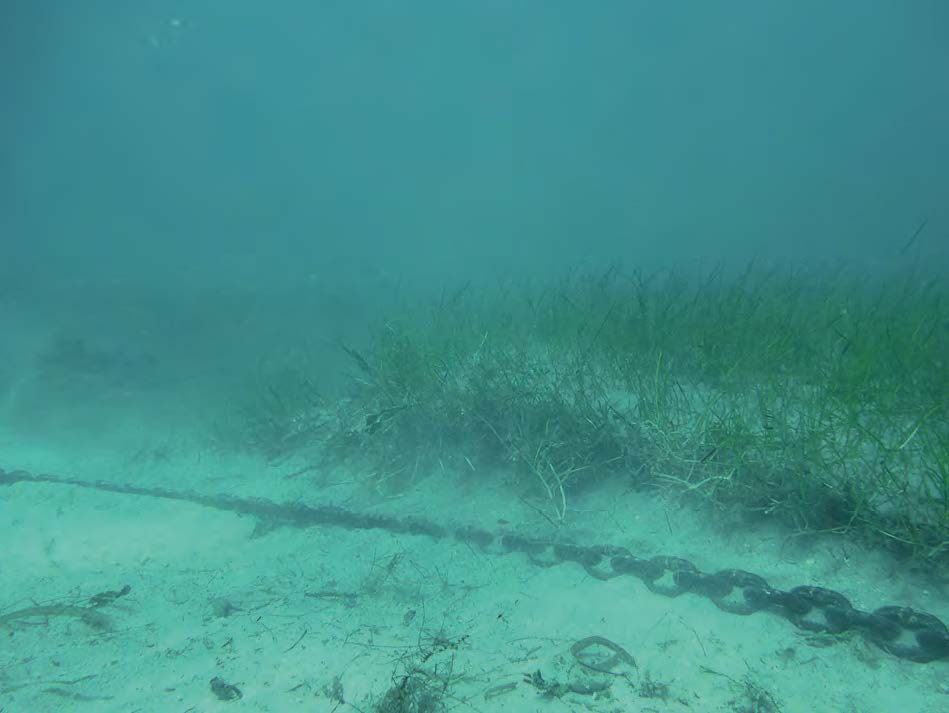The management of the sea grass bed at Tintimare’s Baie Blanche, where green sea turtles feed, was the focus of a study done by Charlotte Bousquet, who was an intern at the Réserve Naturelle from February through June 2016.
A master’s student in environmental sciences and littoral ecology at the University of La Rochelle, she started by marking a map of the herbier and evaluating its overall health. Next, she did a study on the usage of the bay by various kinds of boats, noting their size, if they belonged to an private individual or a nautical professional, and if they opted to use anchors rather than mooring buoys placed there for their use by the Réserve Naturelle. Based on her early results, Bousquet researched the impact that anchors and their chains have on the herbier, as they can leave serious scars. To do so, she identified three sectors: the zone where the buoys are placed; the mooring zone behind the buoys where certain sailors prefer to anchor; and the zone located to the south of the bay, where boats very rarely anchor. Conclusion: the overall health of the plant bed is good, in spite of the presence of small areas where anchors have more impact than others. At the same time, the practice of mooring with an anchor is more often the choice of private individuals, rather than the professionals. As for the level of usage, generally not too high, there are peaks, at which time there can be as many as 15 motorboats at the same time, but for a limited amount of time, usually the days when several cruise ships are in the port of Philipsburg. This report puts an accent on the need to reinforce the awareness for individuals and get everyone thinking about refining the usage and moorings in the center of this zone.

















